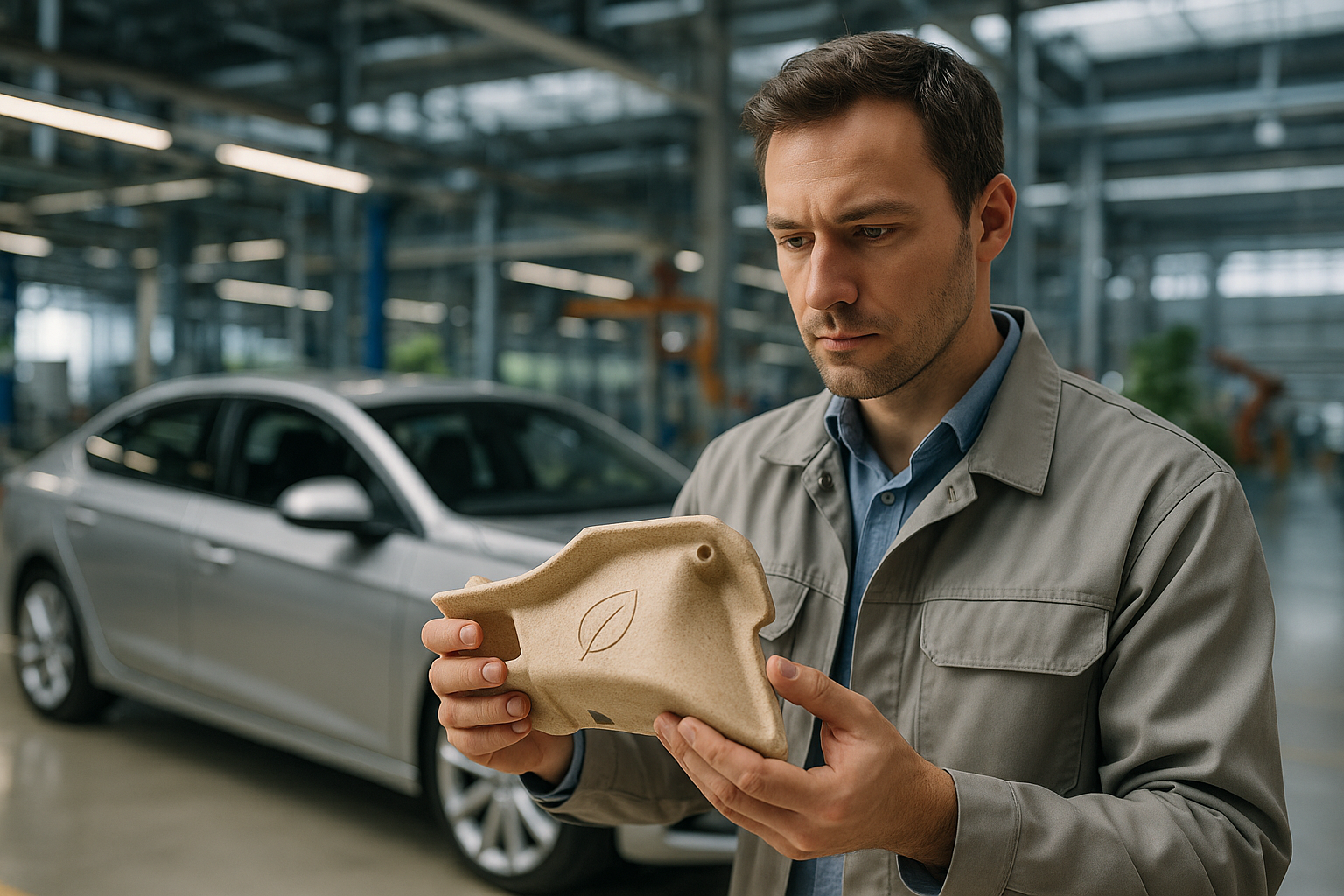"Futureproofing the Industry: The Rising Significance of Bioplastics in Automotive Manufacturing"
The automotive industry is no stranger to change, constantly evolving to meet new challenges and demands. One area of rapid development is the use of bioplastics in vehicle manufacturing. These environmentally friendly materials are not only reducing the carbon footprint of cars but also opening exciting new possibilities for the future of automotive design.

Bioplastics: A New Chapter in Automotive History
The use of plastics in car manufacturing is as old as the industry itself, with early models making use of materials like celluloid for windshields. However, the environmental impact of these materials has been a growing concern, leading to the exploration of more sustainable alternatives. Enter bioplastics, made from renewable resources like plants and biodegradable, these materials offer a greener alternative to traditional plastics.
Bioplastics and the Modern Automotive Industry
In recent years, the use of bioplastics in the automotive industry has surged. Companies like Toyota, Ford, and Mercedes-Benz have already started integrating these materials into their manufacturing processes. They’re used in everything from interior panels to engine components, helping to reduce both the environmental impact and weight of vehicles. This trend is expected to continue, with the global automotive bioplastics market projected to reach $6.9 billion by 2026.
The Impact of Bioplastics
The use of bioplastics in the automotive industry is not without its challenges. For one, these materials can be more expensive to produce than traditional plastics. However, the benefits they offer far outweigh these challenges. They’re lighter than conventional materials, leading to increased fuel efficiency. They’re also more environmentally friendly, reducing the carbon footprint of automobile manufacturing. Moreover, they offer new possibilities for car design, as they can be molded into shapes that traditional materials cannot achieve.
The Road Ahead: Bioplastics and the Future of the Automotive Industry
The rise of bioplastics in the automotive industry is more than just a trend—it’s a shift towards a more sustainable future. As the world grapples with the effects of climate change, the automotive industry has a responsibility to reduce its environmental impact. Bioplastics offer a viable way to do this, providing a greener, more sustainable alternative to traditional materials. As research and development continue, we can expect to see these materials play an increasingly significant role in the cars of the future.
In conclusion, bioplastics represent a new chapter in the history of the automotive industry. They offer a way to reconcile the need for high-quality, durable materials with the demand for more environmentally friendly manufacturing processes. While challenges remain, the potential benefits of these materials make them an exciting area of development—one that promises to reshape the future of car manufacturing.




